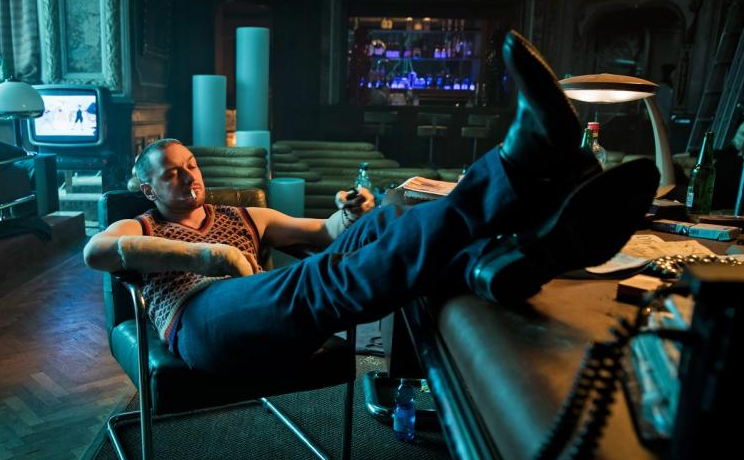Stupid movies can be great. Take Brad Peyton’s San Andreas for example. That was a stupid movie, but there was absolutely a degree of self-awareness to the whole thing. A disaster movie that knows if it manages the disaster elements successfully then it is a success.
A stupid movie that doesn’t know that it’s stupid will run into problems, and stupid movies always feel stupider when they position themselves in situations that deserve a deeper consideration than fleeting. In Atomic Blonde that situation is the Cold War, in the days leading up to the fall of the Berlin Wall.
“Mr.Gorbachev, tear down this wall,” we hear Reagan say, and we sit up. But then, huge neon letter race through Reagan’s face. “THIS IS NOT THAT STORY.” We sink back down. That Atomic Blonde has very little to with the fascinating world events with which it has tenuously associated itself with is a missed opportunity. Another missed opportunity is that crucial information regarding the film’s central character is provided in the closing moments, when the character would have been drastically more interesting had that information been explicit from the outset.

That character, and the interest she generates, is a crucial flaw to Atomic Blonde. Charlize Theron, who is capable of mustering up extraordinary performances, plays top-level MI6 spy Lorraine Broughton (Charlize Theron) with as much spark as a dry biscuit. The film itself is convinced of her coolness, but it’s always the cooler a movie insists that a character is that the less cool they become, and no amount of grog, cigarettes, “fucks”, or laboured composure in the face of death will do anything to convince us otherwise.
Broughton is sent by her superiors to Berlin following the death of fellow agent James Gasciogne. Gasciogne was in possession of a list that contains the names of every active field agent in the Soviet Union (is Brain De Palma’s Mission: Impossible really so long ago?), and it has fallen into the hands of his KGB assassins. Broughton meets with her main contact, David Percival (James McAvoy), a renegade agent with his own ideas about how to operate, and begins to suspect that he is the notorious double agent, Satchel.
Action scenes are Leitch’s forte, the director having spent most of his career as working in stunts. There’s a one take action scenes toward the end of David Leitch‘s Atomic Blonde that is such a wonderful accomplishment, both technically and in terms of the cleverness of the stunt work, that it’s genuinely difficult to comprehend exactly how it was executed. That’s no easy feat in contemporary cinema.
The shot will surely be remembered alongside comparably impressive long take action scenes from John Woo’s Hard Boiled and Prachya Pinkaew and James Glickenhaus’ The Protector. The scene is the direction that I envisioned most action cinema might take following the release of Alfonso Cuarón’s Children of Men, although it never really did. For the duration of the scene, Atomic Blonde was outstanding.

Halfway through the film, the characters stumble through a cinema that is playing Andrei Tarkovsky’s Stalker. Why? Does Leitch believe that his film and Tarkovsky’s share comparable themes or is he simply a fan or was it a random choice? Either way, the presence of Tarkovsky’s masterpiece further accentuates, by virtue of its quality, the lack of quality in Atomic Blonde. If you’re a stupid movie trying to be smart, at least have your characters run through a cinema that’s playing Paul Blart: Mall Cop. They’ll look like geniuses by comparison.